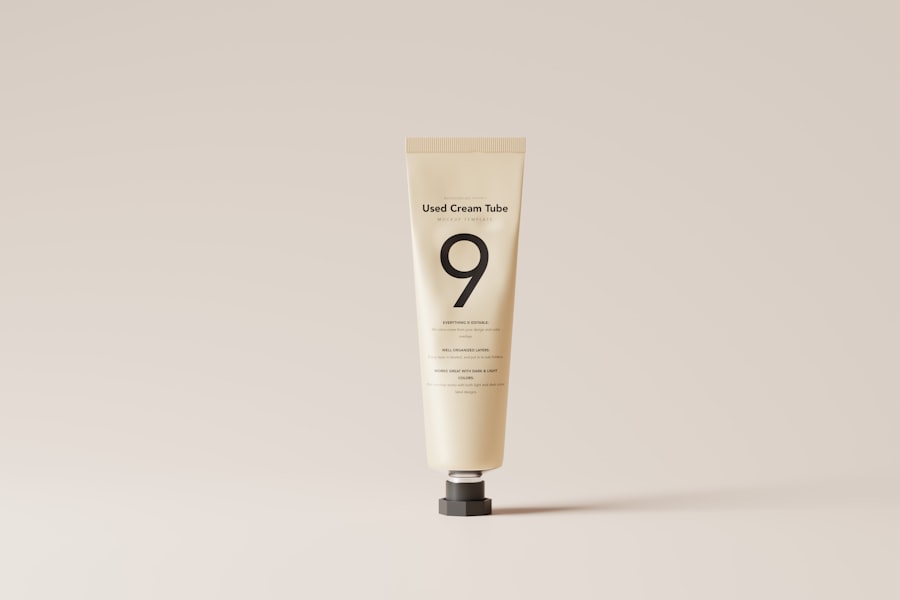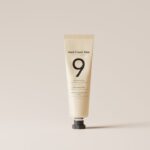When you consider laser hair removal, it’s essential to grasp how the process works. At its core, laser hair removal utilizes concentrated beams of light to target and destroy hair follicles. The pigment in the hair absorbs this light, which generates heat and ultimately damages the follicle, inhibiting future hair growth.
This method is particularly effective for individuals with dark hair and lighter skin, as the contrast allows the laser to focus more effectively on the hair pigment. However, advancements in technology have made it possible for various skin tones and hair types to benefit from this treatment. The procedure typically begins with a consultation where a trained professional assesses your skin type, hair color, and overall health to determine the best approach for you.
During the actual treatment, you may be given protective eyewear to shield your eyes from the laser light. A cooling gel or device may also be applied to your skin to minimize discomfort. The sensation can be likened to a rubber band snapping against your skin, but many find it tolerable.
Depending on the area being treated, sessions can last anywhere from a few minutes to over an hour. Understanding this process can help you feel more at ease as you embark on your journey toward smoother skin.
Key Takeaways
- Laser hair removal targets hair follicles with concentrated light to inhibit future hair growth
- Shave the treatment area before the session and avoid sun exposure and tanning products
- Apply soothing creams and ice packs to alleviate discomfort and redness after treatment
- Use sunscreen and protective clothing to shield treated areas from sun exposure
- Follow up with maintenance treatments as recommended and be aware of potential risks and complications
Preparing for Laser Hair Removal Treatment
Avoiding Sun Exposure
Before your first appointment, you should avoid sun exposure for at least two weeks. Tanning can increase the risk of complications and reduce the effectiveness of the treatment. If you have recently tanned or have a sunburn, it’s advisable to reschedule your appointment until your skin has returned to its normal state.
Refraining from Hair Removal Methods
Additionally, you should refrain from waxing or plucking hair in the area to be treated for at least four weeks prior to your session. This is because these methods remove the hair follicle, which is essential for the laser to target effectively.
Shaving and Medications
Another important aspect of preparation is shaving the area where you will receive treatment. You should shave the area 24 hours before your appointment, as this allows the laser to focus on the hair follicle without interference from longer hair above the skin’s surface. It’s also wise to discuss any medications you are taking with your practitioner, as certain medications can increase sensitivity or affect your skin’s response to the laser.
By taking these preparatory steps seriously, you can enhance the effectiveness of your treatment and ensure a smoother experience.
Post-Treatment Care Instructions

After undergoing laser hair removal, following post-treatment care instructions is crucial for optimal results and skin health. Initially, you may experience some redness or swelling in the treated area, similar to a mild sunburn. To alleviate discomfort, applying a cool compress can be beneficial.
Mayo Clinic It’s also advisable to avoid hot showers, saunas, or intense workouts for at least 24 hours post-treatment, as these activities can exacerbate irritation and sensitivity. In addition to managing immediate side effects, you should also keep the treated area clean and moisturized. Using a gentle cleanser and a soothing lotion can help maintain skin hydration and promote healing.
Avoiding harsh skincare products containing retinoids or exfoliants for a week after treatment is also recommended, as these can irritate sensitive skin. By adhering to these post-treatment care guidelines, you can support your skin’s recovery and enhance the effectiveness of your laser hair removal sessions.
Managing Discomfort and Side Effects
| Discomfort and Side Effects | Metrics |
|---|---|
| Number of patients experiencing discomfort | 235 |
| Types of side effects reported | nausea, fatigue, headache, dizziness |
| Severity of discomfort on a scale of 1-10 | 6.5 |
| Number of patients requiring intervention | 78 |
While many people tolerate laser hair removal well, some may experience discomfort or side effects during and after the procedure. The sensation during treatment can vary from person to person; some describe it as a slight sting or snap, while others may find it more intense. If you are particularly concerned about pain, discuss this with your practitioner beforehand.
They may offer topical anesthetics or cooling devices that can help minimize discomfort during the session. Post-treatment side effects can include redness, swelling, or even minor blistering in some cases. If you notice any unusual reactions or prolonged discomfort, it’s essential to contact your practitioner for advice.
Over-the-counter pain relievers like ibuprofen can help manage any discomfort you may experience after treatment. Additionally, keeping the area moisturized and avoiding sun exposure will aid in reducing irritation and promoting healing. By being proactive about managing discomfort and side effects, you can ensure a more pleasant experience throughout your laser hair removal journey.
Protecting Your Skin from Sun Exposure
One of the most critical aspects of post-laser hair removal care is protecting your skin from sun exposure. After treatment, your skin will be more sensitive and susceptible to damage from UV rays. It’s essential to avoid direct sunlight for at least two weeks following each session.
If you must be outdoors, wearing protective clothing and applying a broad-spectrum sunscreen with an SPF of 30 or higher is crucial. This will not only protect your skin but also help prevent pigmentation changes that can occur after laser treatments. In addition to sunscreen, consider seeking shade whenever possible and wearing wide-brimmed hats or sunglasses to shield your face from harmful rays.
Even on cloudy days, UV rays can penetrate through clouds and affect your skin. By taking these precautions seriously, you can safeguard your skin’s health and enhance the results of your laser hair removal treatments.
Long-Term Maintenance and Follow-Up Treatments
Initial Treatment Series
Most individuals need between three to seven treatments spaced several weeks apart to achieve significant hair reduction.
Maintenance Sessions
After completing your initial series of treatments, you may find that some areas require maintenance sessions every six months to a year to keep unwanted hair at bay. These follow-up appointments are crucial for ensuring that you enjoy smooth skin without frequent regrowth.
They may recommend additional sessions if they notice any persistent hair growth or changes in your skin’s response to the laser. Staying consistent with these follow-up treatments will help maintain the results you’ve achieved and ensure that you continue to enjoy the benefits of laser hair removal over time.
Potential Risks and Complications
While laser hair removal is generally considered safe, it’s important to be aware of potential risks and complications associated with the procedure. Some individuals may experience temporary side effects such as redness, swelling, or changes in skin pigmentation following treatment. In rare cases, more severe complications like blistering or scarring can occur if proper care is not taken before and after treatment.
To minimize risks, it’s crucial to choose a qualified practitioner who uses FDA-approved equipment and follows safety protocols. During your consultation, don’t hesitate to ask about their experience and any potential risks specific to your skin type or medical history. By being informed and proactive about potential complications, you can make educated decisions regarding your laser hair removal journey.
Tips for Maximizing Results and Minimizing Hair Regrowth
To maximize the results of your laser hair removal treatments and minimize hair regrowth, there are several strategies you can implement throughout the process. First and foremost, adhere strictly to your treatment schedule as recommended by your practitioner. Consistency is key when it comes to achieving long-lasting results; missing appointments can lead to uneven hair reduction.
Additionally, maintaining healthy skin is vital for optimal outcomes. Hydrate regularly by drinking plenty of water and using moisturizers on treated areas to keep your skin supple and resilient. Avoiding harsh chemicals or exfoliants in your skincare routine will also help maintain skin integrity during treatment periods.
By following these tips and remaining committed to both pre- and post-treatment care, you can enhance the effectiveness of laser hair removal while enjoying smoother skin for years to come.
After undergoing laser hair removal treatment, it is crucial to follow proper aftercare instructions to ensure optimal results and minimize any potential side effects. One helpful resource for learning about laser hair removal aftercare is the article on the In Laser Hair Removal website. This article provides detailed information on how to care for your skin post-treatment, including tips on moisturizing, avoiding sun exposure, and managing any discomfort. For more information on laser hair removal aftercare, visit https://www.inlaserhairremoval.com/contact/.
FAQs
What is laser hair removal aftercare?
Laser hair removal aftercare refers to the steps and precautions that should be taken after undergoing a laser hair removal treatment to ensure proper healing and optimal results.
Why is laser hair removal aftercare important?
Laser hair removal aftercare is important to minimize the risk of complications such as skin irritation, redness, and swelling. It also helps to promote faster healing and maintain the effectiveness of the treatment.
What are some common aftercare instructions for laser hair removal?
Common aftercare instructions for laser hair removal may include avoiding sun exposure, using gentle skincare products, avoiding hot showers and baths, and avoiding activities that may cause excessive sweating.
How long does it take for the skin to heal after laser hair removal?
The skin typically takes a few days to a week to heal after laser hair removal. However, this can vary depending on the individual’s skin type and the intensity of the treatment.
Are there any specific products that should be used for laser hair removal aftercare?
It is recommended to use gentle, non-irritating skincare products after laser hair removal. This may include fragrance-free moisturizers, gentle cleansers, and soothing creams recommended by the treatment provider.
What are some common side effects of laser hair removal and how can they be managed during aftercare?
Common side effects of laser hair removal may include redness, swelling, and mild discomfort. These can be managed during aftercare by applying soothing creams, avoiding sun exposure, and following the aftercare instructions provided by the treatment provider.






